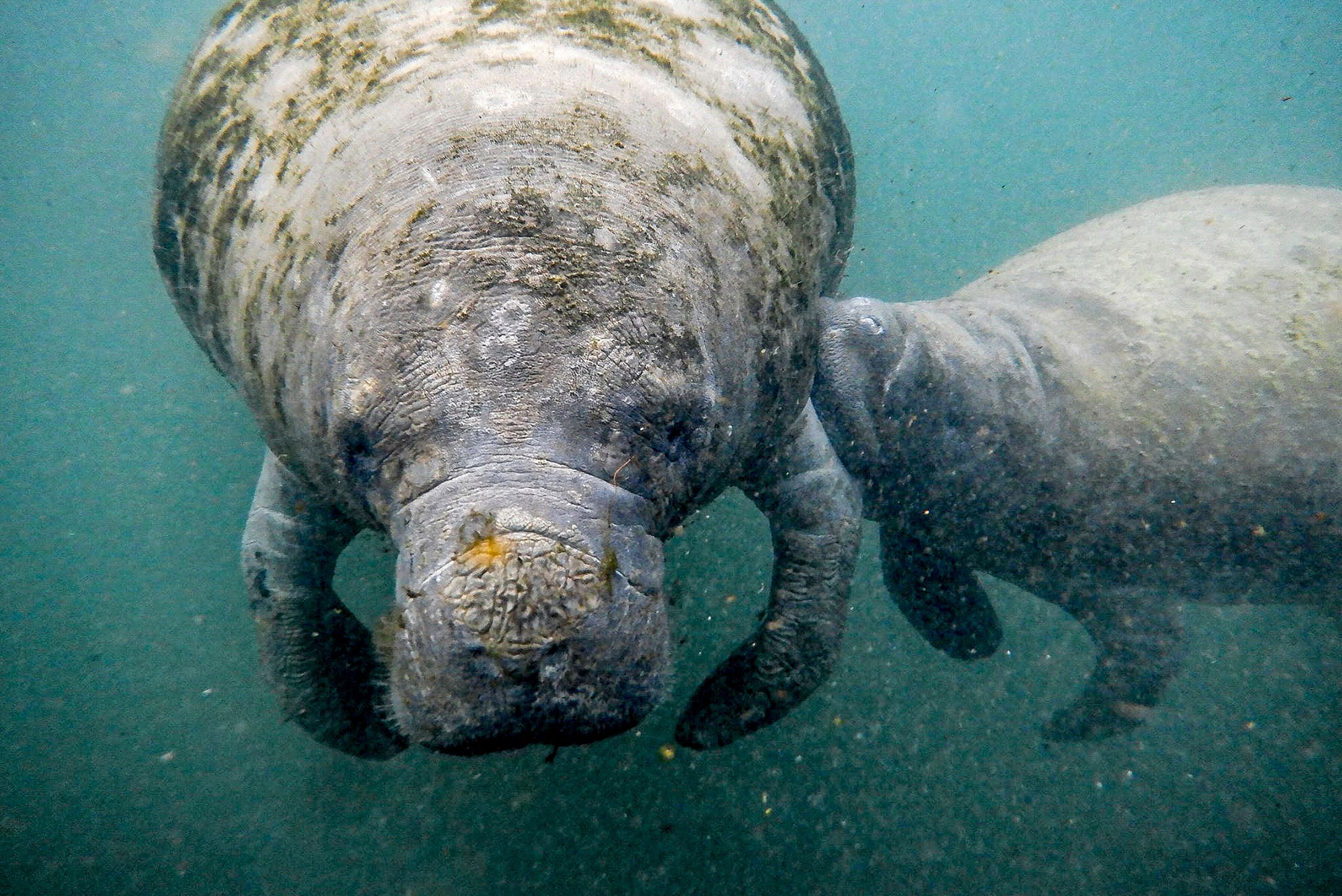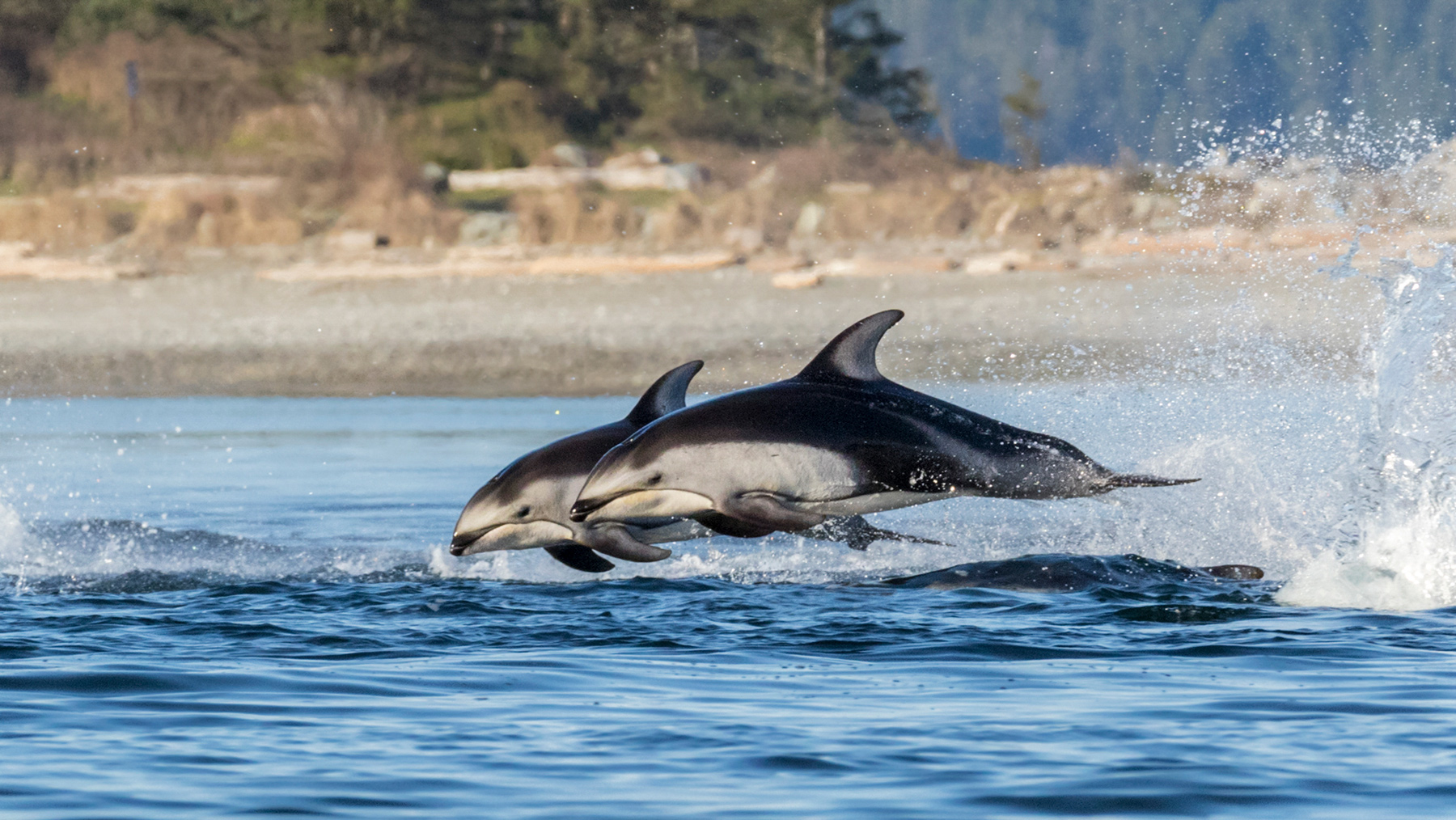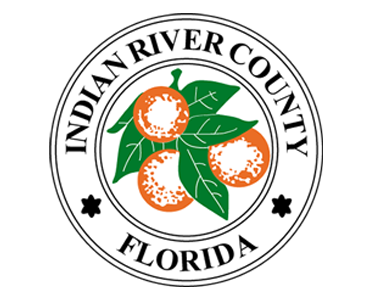Along Florida’s east coast, one of North America’s most biodiverse estuaries is facing growing pressure from stormwater pollution.
The Nature Conservancy is pioneering the world’s first smart and interconnected watershed to improve the Lagoon’s health – creating a model to protect ecosystems, clean water, and communities everywhere.
The Lagoon’s Ecosystem Under Threat
The Indian River Lagoon stretches 156 miles along Florida’s Atlantic coast and supports more than 4,000 species of plants and animals, including manatees, dolphins, fish, birds, and seagrass meadows. Its overall health is threatened by large amounts of pollution, including from stormwater.
The Lagoon is home to seagrass beds that provide critical habitat for wildlife and sustain valuable commercial and residential fisheries. Since 2009, experts estimate that portions of the Lagoon have lost as much as 58% of its seagrass beds due to excess nutrients carried into its waters by stormwater.
This pollution swept into the Lagoon comes in part from stormwater runoff – water that carries fertilizers, household chemicals, pet waste, trash, and other pollutants from yards, streets and parking lots.
One particularly harmful result of stormwater pollution is algal blooms. Spurred by unnatural concentrations of nitrogen and phosphorous, the blooms block sunlight, killing seagrass and the fish, manatees, and sea turtles that rely on this vital marine habitat to thrive.

Florida Manatee
4,000 – 7,000 manatees live in and amongst Florida’s East Coast freshwater springs and coastal estuaries like the Indian River Lagoon. In 2021, 1,100 Florida manatees died when algal blooms in the Lagoon killed large swaths of seagrass — their primary food source.

Indian River Lagoon Dolphin
Unique to the Lagoon, this subset of the Atlantic bottlenose dolphin has adapted to its warmer waters and sheltered habitat. Because they rarely leave the Lagoon, these dolphins are particularly vulnerable to water pollution, including from stormwater.
A Living Lab in the Lagoon
The Nature Conservancy, together with local experts, is building a “Living Lab” to prove the efficacy of Smart Watershed Network Management in the Indian River Lagoon. This is helping to keep the Lagoon’s ecosystem, and surrounding rivers, streams, and canals, healthy.
What is Smart Watershed Network Management?
A watershed is a land area that channels water to streams, rivers, and creeks, and further to outflows such as reservoirs, bays, and the ocean.
Smart Watershed Network Management (SWNM) is an integrated approach to improving the performance of existing stormwater infrastructure. It uses sensors, data analytics, modeling, and automated control devices.
By connecting this infrastructure to form an intelligent network, SWNM enables predictive forecasting, real-time monitoring, and adaptive control of water flows to reduce flooding, improve water quality, and enhance reuse opportunities.
Using AI and predictive models, the system anticipates how a watershed will respond to rain and automatically adjusts operations to make the best use of existing infrastructure while protecting downstream areas.
What is a Living Lab?
A Living Lab is like an open-air science lab – a real place where experts, communities, and technology come together to advance new modeling, machine learning, and active control technologies that make stormwater infrastructure smarter and more adaptive.
Brightstorm and its collaborators have chosen the Indian River Lagoon as the world’s first iteration of Smart Watershed Network Management. We’re implementing state-of-the-art techniques to actively manage water levels and flows in real-time to reduce flooding and pollution – for example, by coordinating automated release valves based on real-time weather forecasts. We know active controls work, and the Living Lab is a place to apply this knowledge and to scale it.
It’s science in motion. Helping us learn faster, share what works, and scale up successful approaches to other communities across the country.
The Expected Outcome
This Living Lab pilot in the Indian River Lagoon will provide regulators, engineers, and other decision-makers in Florida with data to better understand the impact of stormwater on critical waterbodies like the Lagoon, and how to better control and manage it using upgrades to existing infrastructure. This makes more accurate and efficient design guidelines, regulatory requirements, and more cost-effective and impactful infrastructure spending possible to improve nature and communities.
This collaborative Lab was intentionally set up in a way that it could be applied elsewhere with existing, inadequate stormwater infrastructure.
Who’s Involved
The Indian River Lagoon Living Lab is a collaborative effort. The Nature Conservancy is working with a host of local decision-makers and experts, from the local water management districts to local universities, state-legislators and local community stakeholders. The Lab also receives engineering and computing support from collaborators.
Get Involved
The Indian River Lagoon Living Lab is consistently evolving to help a critical ecosystem for people and nature. We’re excited to share findings and learnings as the work progresses.
Contact us to learn more.













